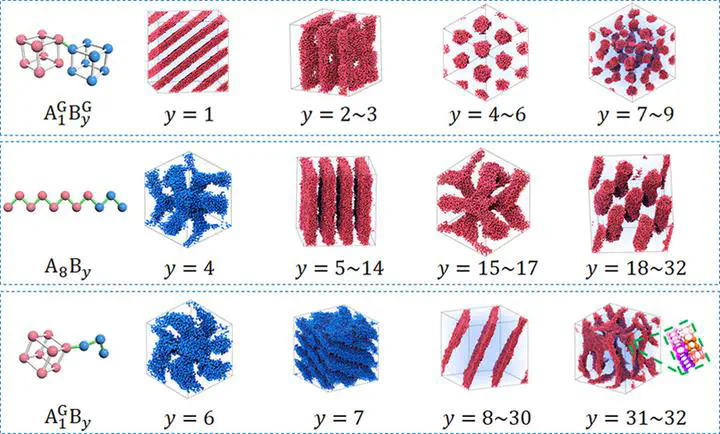
摘要
We have studied the self-assembly of two types of amphiphiles with one or two blocks composed of giant “monomers” of the cubic cage using dissipative particle dynamics (DPD) simulations with the aim to elucidate the influence of the giant monomers on the self-assembly behavior by comparing their self-assembly behaviors with those of conventional AB diblock copolymers. The conformation-symmetric amphiphile with two blocks of giant monomers exhibits a similar transition sequence as that of AB diblock except for the perforated-lamellar morphology replacing the usual double-gyroid morphology. The formation of the PL morphology is attributed to the rigid shape of the cubic monomer as well as the dominant interfacial contribution resulting from the large size of the giant monomer. The other amphiphile with an A block of giant monomers and a B block of conventional monomers has a highly asymmetric conformation due to the large difference in monomer sizes, and thus its phase boundaries are significantly deflected. Moreover, the packing constraint of the rigid cubic A cages leads to the formation of a novel morphology, ill-defined (ID) A-network morphology. In addition, we find that the order–disorder transition temperature is lowered as beads in either A or B block are clustered into the cubic cages. Although the monomer model of the cubic cage is coarsened from the real POSS monomer in the experiments, our simulation results are in qualitative agreement with the experimental results.